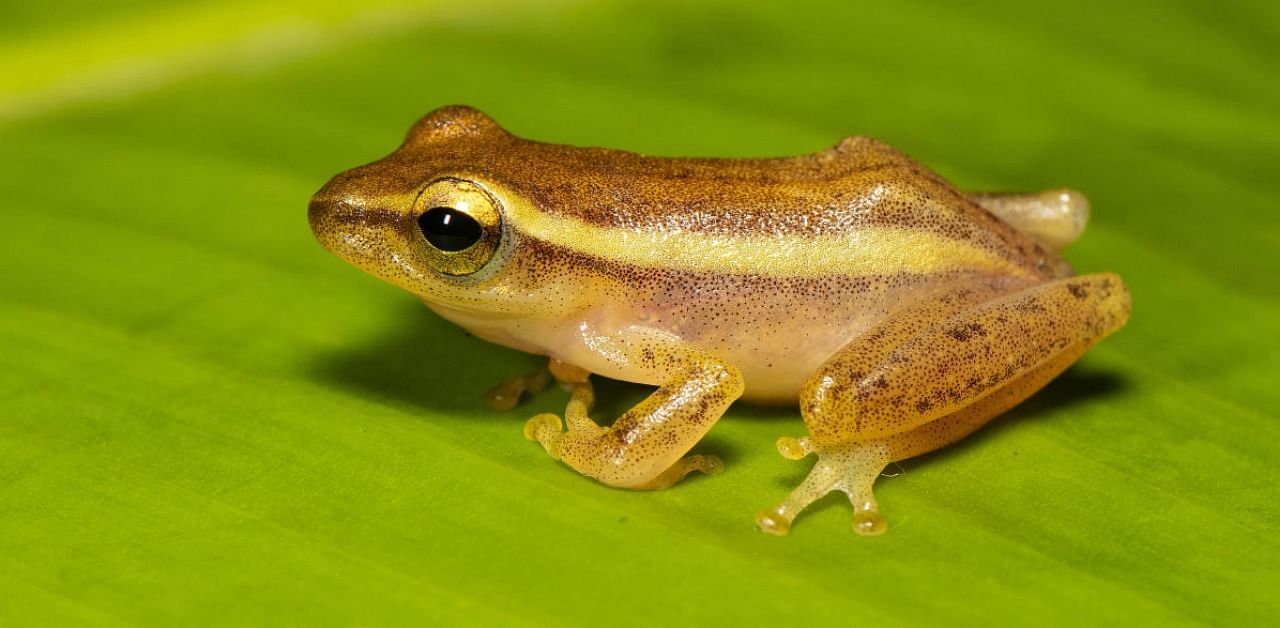
Indian frog hunters on Thursday reported the first genus of tree frogs from the Andaman islands demonstrating that the amphibian inventory of the region was still far from being complete.
Frogs of the new genus are characterised by a rather small and slender body (size about 2 to 3 cm long), a pair of contrastingly coloured lateral lines on either side of the body, minute brown speckles scattered throughout the upper body surfaces, light green colored eggs laid in arboreal bubble-nests, and several other unique behavioral traits.
Named Rohanixalus after Sri Lankan taxonomist Rohan Pethiyagoda, the new genus comprises of eight tree frog species found in Asia and Africa.
“The discovery is unexpected and once again highlights the importance of dedicated faunal surveys and explorations for proper documentation of biodiversity in a mega diverse country like India. The finding also uncovers an interesting new distribution pattern of tree frogs that provides evidence for faunal exchange between Andamans and the Indo-Burma region” said SD Biju, a professor at Delhi University and India's foremost frog hunters, who led the study
The tiny creatures show remarkable parental care from the mother that attends the egg clutches until hatching and assists in release of the tadpoles into the water.
During the first three days after egg laying the female sits over the eggs and produces a gelatinous secretion with which she glazes the egg mass through clock-wise movement of her legs. This behaviour provides necessary moisture to the eggs laid on exposed leaf surfaces and protects them from insect predation.
In yet another unique behavioural trait, eggs are attended by multiple mothers. During field studies in the Andamans, the researchers found a large number of egg clutches (over 50) of different developmental stages on a single leaf or plant. Multiple females usually attend such clutches in a behaviour termed as ‘community’ egg attendance.
The male members display territorial behaviour and frequent male-male combats involving pushing, kicking, and dislodging, in order to successfully mate with a female. The gravid females on the other hand possess translucent skin making their internal organs, including mature eggs, visible on their see-through bodies.
Biju and his colleagues from DU, National Centre for Cell Sciences, Pune and Zoological Survey of India, Andaman unit collaborated with experts from China, Indonesia and Thailand to describe the new genus, its geographical distribution and behavioural traits.
Detailed DNA studies revealed the new genus's distinct evolutionary lineage from all previously known tree frog genera. "During the breeding season, these tiny reddish-brown frogs can be found in large aggregations on bushes and shrubs (about 1 to 4 meters high) surrounding water bodies," Biju said.
Scientists now believe that many more unnamed Rohanixalus species are likely to be present in the Indian subcontinent and future dedicated efforts are required to fully understand the existing species diversity in this new genus.
The findings have been reported in the journal Zootaxa.
